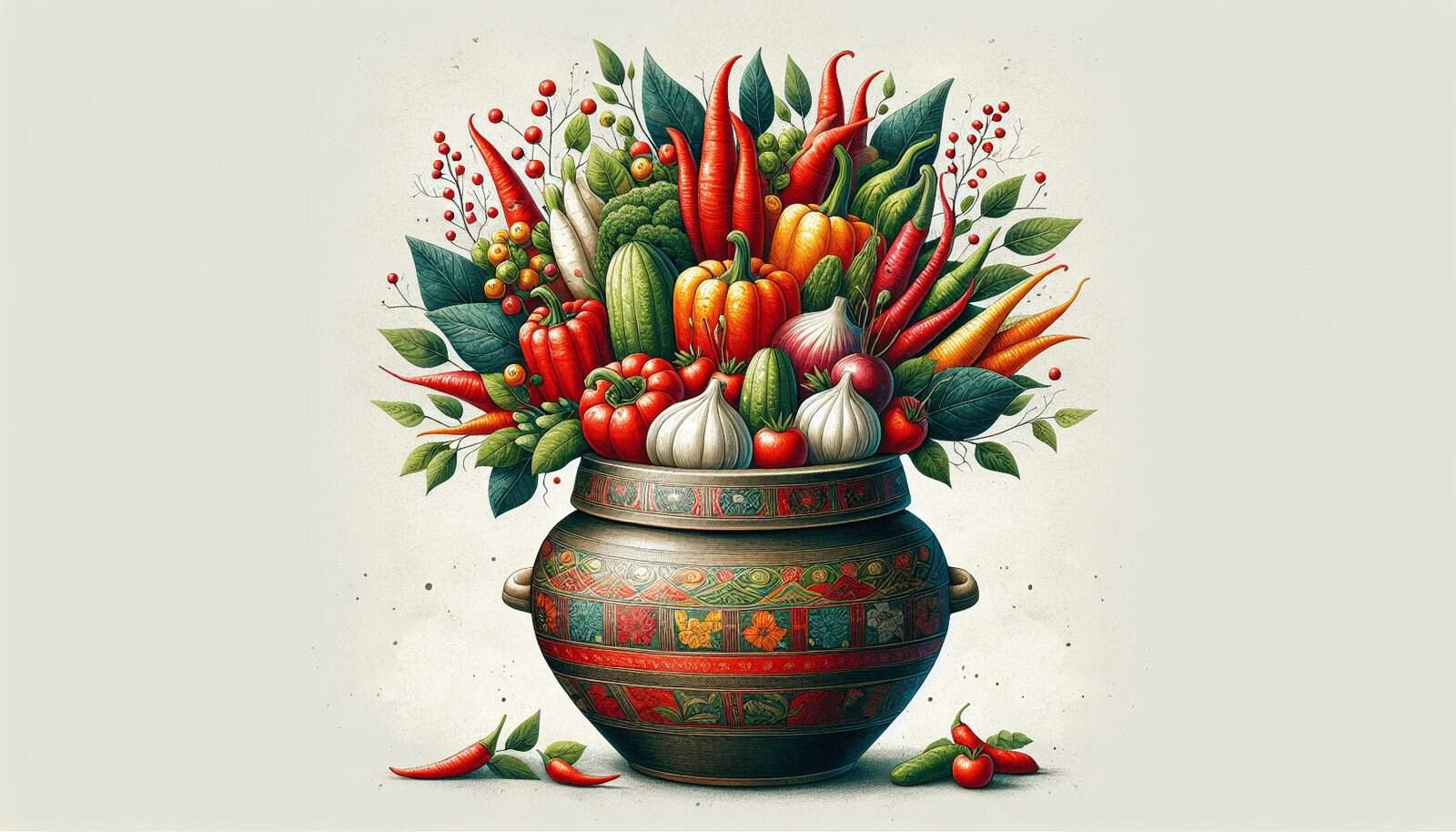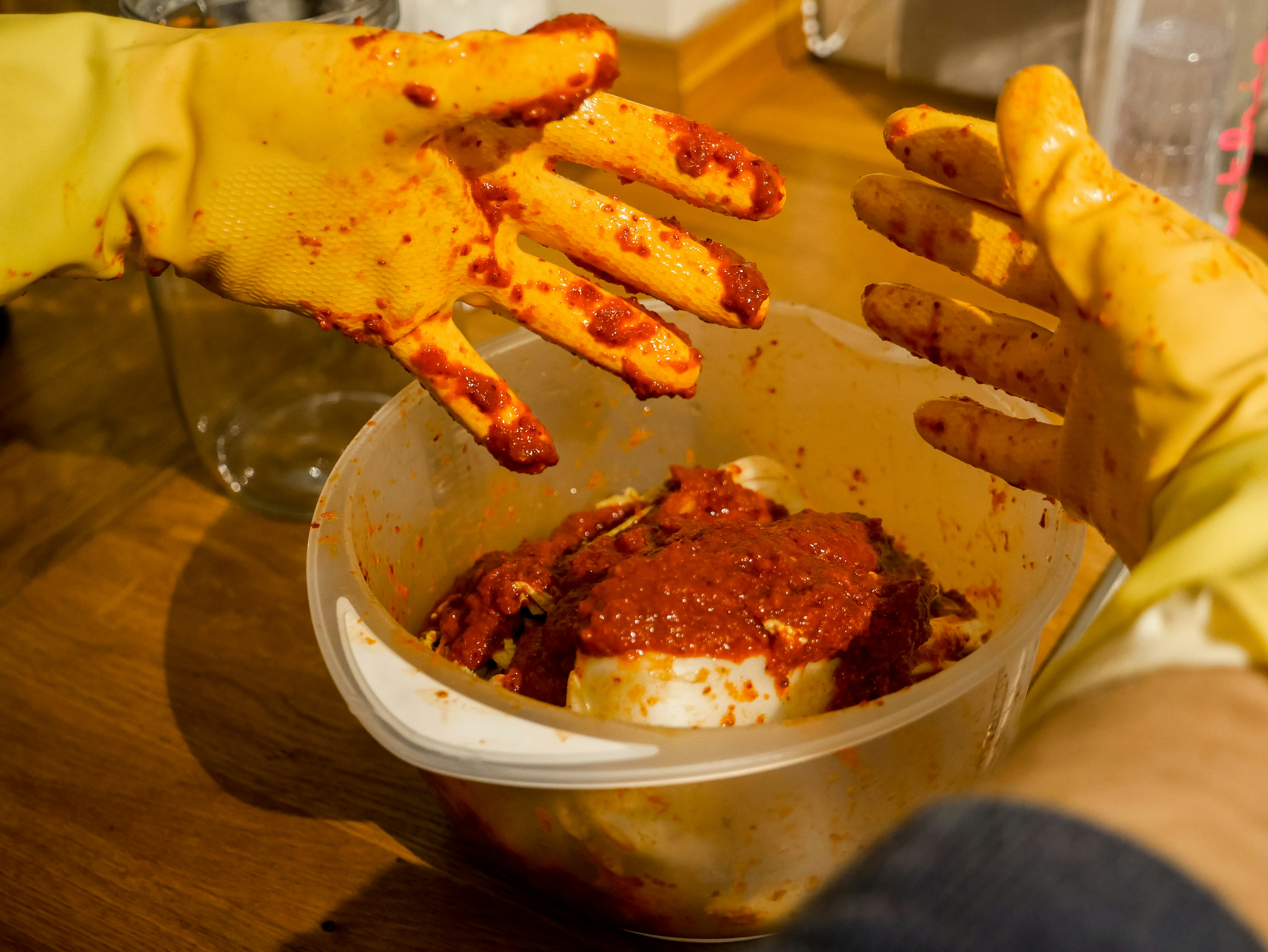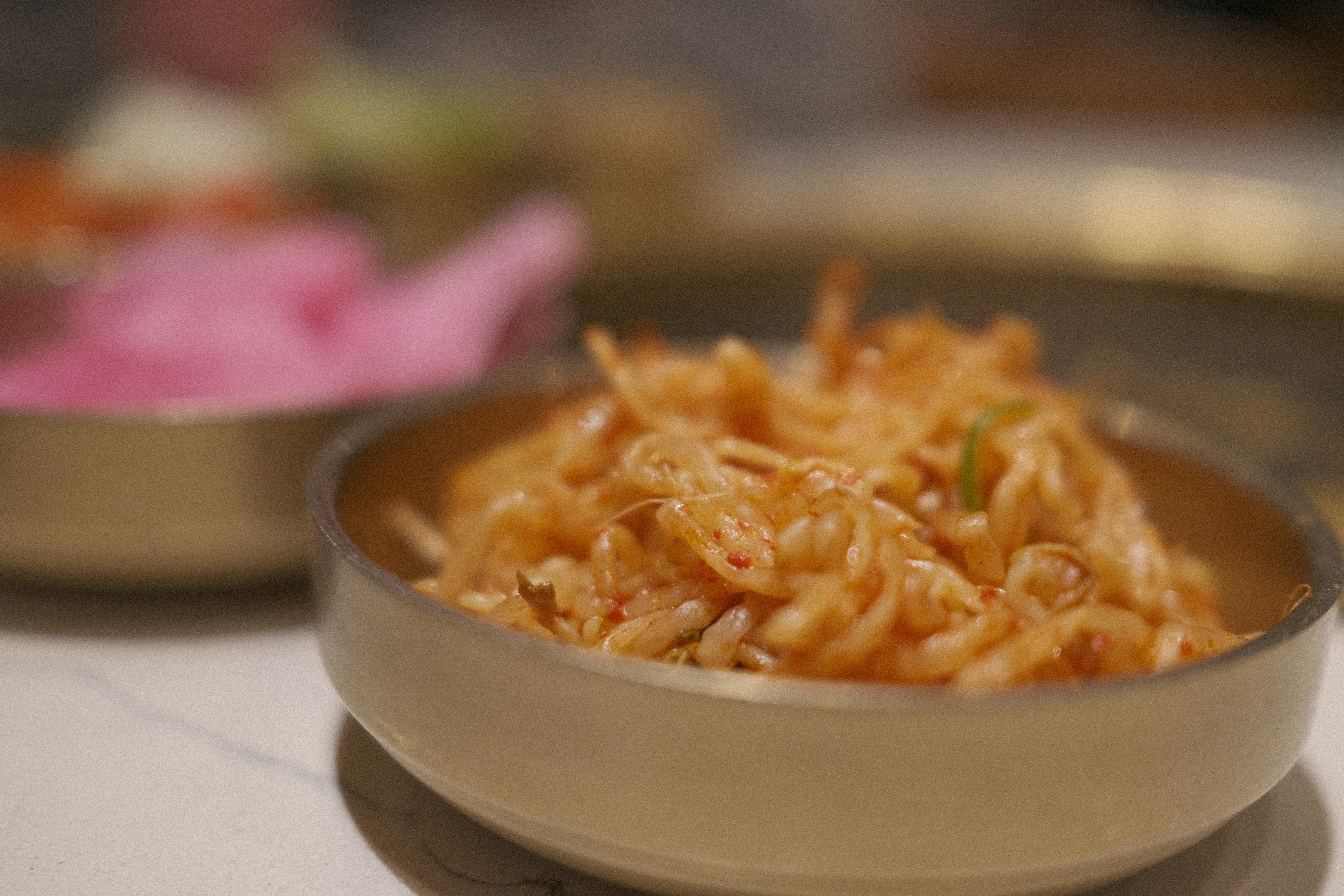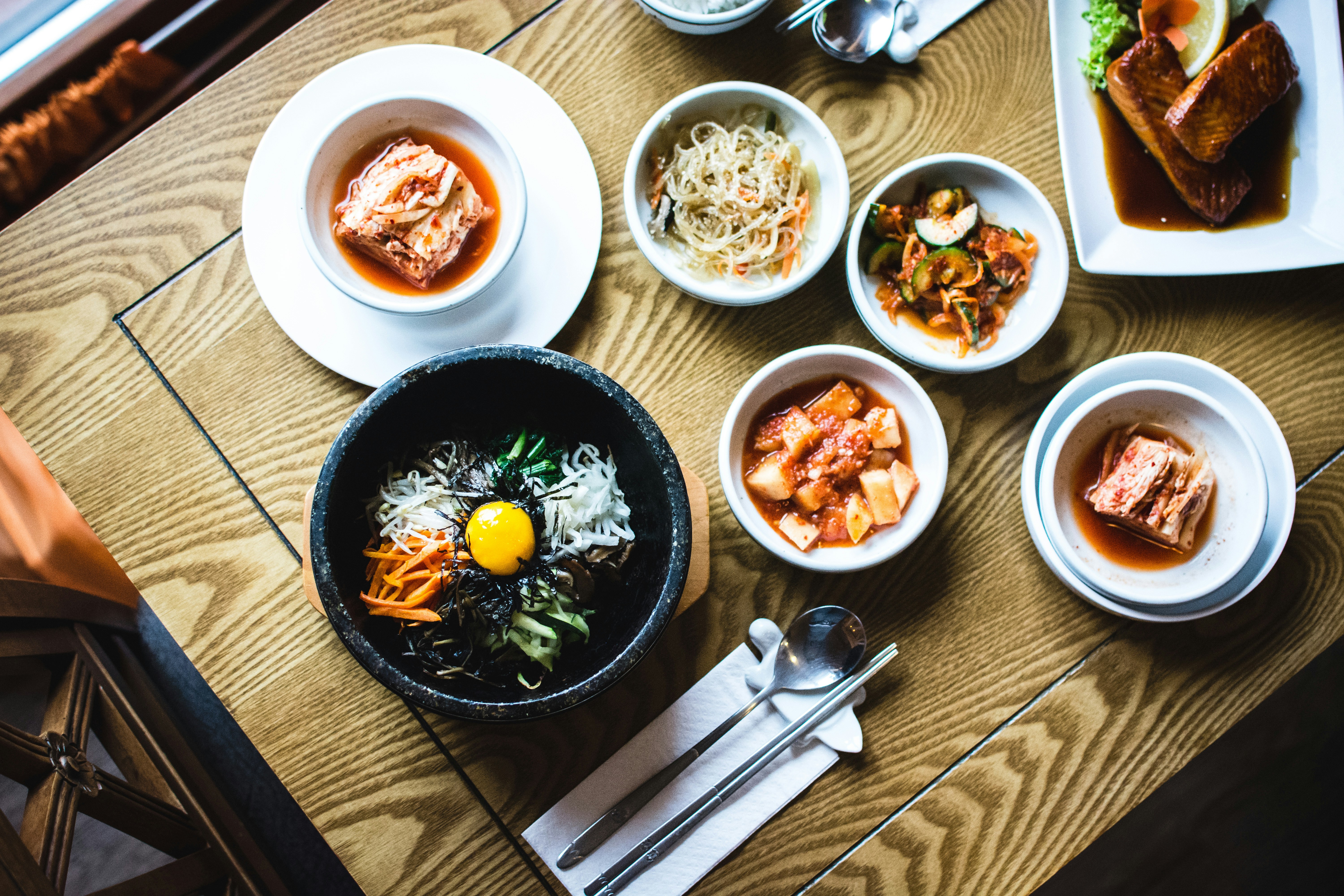Are you ready to embark on a delightful journey into the world of Korean cuisine? Today, we invite you to explore the art of pickling and preserving in this unique culinary tradition. Discover the secrets behind the vibrant flavors and intriguing textures that make Korean pickles and preserved foods so beloved. From kimchi and radish pickles to salted seafood and fermented soybean paste, you will learn how these preservation techniques have been passed down through generations, enabling us to savor the rich flavors of Korean dishes year-round. So, let’s dive in and uncover the captivating art of pickling and preserving in Korean cuisine together!
Introduction to Korean Cuisine
Korean cuisine is known for its bold flavors, diverse ingredients, and unique cooking techniques. From fiery and tangy kimchi to savory soybean paste and pickled vegetables, pickling and preserving play a crucial role in Korean culinary tradition. This article aims to provide an overview of Korean cuisine, delve into the history of pickling and preserving in Korean cooking, explore the different pickling techniques used, discuss the health benefits of Korean pickles, share traditional recipes, and examine the influence of Korean pickling techniques in global cuisine. So grab your apron and get ready to uncover the wonderful world of Korean pickles!
Overview of Korean Cuisine
Korean cuisine is an integral part of Korean culture and reflects the nation’s history and geography. It is characterized by its emphasis on seasonality, balance of flavors, and a wide array of side dishes served alongside the main course. Korean meals are typically composed of rice, soup, a main dish (often grilled or stewed meat or fish), and an assortment of banchan (side dishes). Banchan can range from simple pickles and kimchi to braised vegetables, marinated tofu, and savory pancakes. The combination of these various elements creates a harmonious and satisfying meal.
Importance of Pickling and Preserving in Korean Cuisine
Pickling and preserving have always played a vital role in Korean cuisine. Due to the country’s harsh winters and mountainous terrain that made it challenging to cultivate fresh produce year-round, the traditional preservation techniques were developed as a way to preserve food for long periods. These techniques not only helped extend the shelf life of perishable ingredients but also enhanced their flavor and nutritional value. Moreover, pickling and fermenting were essential methods of food preservation before the advent of refrigeration. Today, pickling continues to be an integral part of Korean cooking, adding depth and complexity to dishes.
History of Pickling and Preserving in Korean Cuisine
Ancient Origins of Pickling and Preserving in Korea
The roots of pickling and preserving in Korean cuisine can be traced back to ancient times. As early as the Three Kingdoms period (57 BC – 668 AD), Koreans were using various methods to preserve food, including salting, fermenting, drying, and smoking. The preservation techniques were influenced by regional geography, weather conditions, and the availability of ingredients. These ancient methods laid the foundation for the rich tradition of pickling and preserving that continues to thrive in Korean cooking today.
Influence of Chinese and Japanese Preservation Techniques
Over the centuries, Korea’s close proximity to China and Japan played a significant role in shaping its culinary practices, including pickling and preserving. Chinese preservation techniques, such as soy sauce fermentation and salted fish preservation, undoubtedly influenced Korean cuisine. Similarly, the Japanese introduced their own methods of pickling and preserving during their occupation of Korea. These cultural exchanges led to the incorporation of new ingredients and techniques, further enriching the Korean culinary tradition.
Development of Unique Korean Pickling Methods
Despite the influences from China and Japan, Korea has developed its own unique pickling methods that set it apart. Korean pickling often revolves around the use of jang, a general term for fermented sauces made from soybeans. These include soybean paste (doenjang) and soy sauce (ganjang). Gochujang, the famous Korean chili pepper paste, is also a staple in Korean pickling. The combination of fermented sauces, spices, and a wide variety of vegetables creates complex and distinct flavors that are a hallmark of Korean cuisine.
Korean Pickling Techniques
Fermentation as a Key Method
Fermentation is a key method used in Korean pickling, as it not only preserves the food but also enhances its flavor and nutritional value. The process involves breaking down complex sugars into simpler compounds, resulting in the production of lactic acid and beneficial bacteria. This microbial activity not only creates tangy and umami flavors but also improves digestion and boosts the immune system. Fermented foods are a staple in Korean cuisine, with kimchi being the most famous example of a fermented pickle.
Salting and Brining for Preservation
Salting and brining are traditional techniques employed in Korean pickling to preserve vegetables and seafood. By sprinkling salt on vegetables or immersing them in brine, the growth of harmful bacteria is inhibited, allowing for safe long-term storage. This process also draws out excess moisture from the vegetables, resulting in a desired texture and concentrated flavors. Salted fish, such as salted mackerel or salted pollack, are popular preserved seafood in Korean cuisine.
Use of Soy Sauce and Soybean Paste
Soy sauce (ganjang) and soybean paste (doenjang) are fermented sauces that play a crucial role in Korean pickling. Soy sauce is made by fermenting soybeans and wheat, creating a savory, umami-rich condiment. It adds depth of flavor to pickles and is often combined with other ingredients like garlic, ginger, and spices to create marinades and sauces. Soybean paste, on the other hand, is made from fermented soybeans and adds a unique earthiness to pickles and stews.
Incorporation of Chili Peppers and Spices
Korean cuisine is known for its love of spice, and pickled foods are no exception. Chili peppers in various forms, such as powder, flakes, or paste, are frequently used in Korean pickling. Gochugaru, a coarsely ground red chili pepper, is a common ingredient in kimchi and other pickles. Spices like garlic, ginger, scallions, and sesame seeds are also commonly added to pickles to enhance their flavor profile.
Variety of Pickling Vessels and Containers
Korean pickling often involves the use of specialized vessels and containers designed for fermentation and preservation. One of the most iconic containers is the onggi, large earthenware jars used for fermenting kimchi. The porous nature of the clay allows for natural air circulation while maintaining a stable fermentation environment. Other vessels, such as glass jars or ceramic crocks, can also be used for smaller-scale pickling at home. These vessels play a crucial role in controlling the fermentation process and imparting unique flavors to the pickles.
Regional Variations of Pickled and Preserved Foods
Kimchi – The Iconic Korean Pickle
No discussion of Korean pickling would be complete without mentioning kimchi, the iconic Korean pickle. Kimchi has been a staple in Korean cuisine for centuries and is made by fermenting vegetables, most commonly cabbage, with spices, garlic, ginger, and chili peppers. The result is a tangy, spicy, and pungent pickle that is enjoyed as a side dish, used in soups and stews, or incorporated in various dishes. Kimchi is not only a source of pride for Koreans but also a symbol of their cultural identity.
Different Types of Kimchi Across Regions
While the most well-known type of kimchi is made with napa cabbage, there are hundreds of different types of kimchi found across Korea. Each region has its own unique variation of kimchi, often featuring locally available ingredients and reflecting regional preferences. Some popular regional kimchi varieties include baechu kimchi (cabbage kimchi), radish kimchi, cucumber kimchi, and water kimchi. The diversity of kimchi highlights the regional variations in taste, texture, and flavors within Korean cuisine.
Geotjeori – Fresh Kimchi
Geotjeori, also known as “fresh kimchi,” is a type of kimchi that is not fermented and can be enjoyed immediately after preparation. It is typically made with crunchy, fresh vegetables, such as napa cabbage or radishes, and seasoned with garlic, ginger, red chili pepper flakes, and fish sauce. Geotjeori offers a refreshing and crisp alternative to the more pungent and intense flavors of fermented kimchi.
Oi-sobagi – Stuffed Cucumber Kimchi
Oi-sobagi, or stuffed cucumber kimchi, is a popular variation of kimchi that features whole cucumbers stuffed with a spicy mixture of radish and mustard greens. The cucumbers are lightly salted and then stuffed before being fermented. The result is a crunchy pickle with a vibrant and spicy filling. Oi-sobagi is a refreshing and delicious side dish that pairs well with grilled meats or as a topping for bibimbap.
Baechu Kimchi – Cabbage Kimchi
Baechu kimchi, also known as cabbage kimchi, is arguably the most well-known and widely consumed type of kimchi. It is made by fermenting napa cabbage leaves with a paste made from chili pepper flakes, garlic, ginger, and other seasonings. Baechu kimchi is characterized by its robust flavor, vibrant red color, and crisp texture. It is a staple side dish in Korean households and is often used as an ingredient in various dishes.
Other Popular Regional Pickles
In addition to kimchi, there are numerous other pickles and preserved foods found throughout Korea. Popular examples include kkakdugi (cubed radish kimchi), mu-seon (preserved radish), oi-muchim (spicy cucumber salad), and yangpa-jangajji (pickled onions). Each of these pickles offers its own unique combination of flavors, textures, and spices, showcasing the culinary diversity within Korean cuisine.
Health Benefits of Korean Pickles
Probiotic Properties of Fermented Pickles
Fermented pickles, such as kimchi and other fermented vegetables, are rich in beneficial bacteria or probiotics. These probiotics promote a healthy gut microbiome, aid in digestion, and enhance nutrient absorption. Consuming fermented pickles can contribute to improved gut health and overall well-being.
Digestive Benefits of Kimchi
Kimchi, in particular, offers several digestive benefits. The fermentation process breaks down complex carbohydrates, making them easier to digest. Kimchi also contains enzymes that support the breakdown of proteins and fats, aiding in the digestion of other foods consumed alongside it. The spiciness of kimchi can also help stimulate the production of digestive juices, promoting healthy digestion.
Rich Source of Vitamins and Minerals
Korean pickles, especially kimchi, are packed with vitamins and minerals that contribute to a well-balanced diet. The fermentation process enhances the bioavailability of these nutrients, making them easier for the body to absorb. Kimchi contains vitamins A, B, and C, as well as minerals such as calcium, iron, and potassium. Including pickles in your diet can help ensure you receive a diverse range of nutrients.
Helps in Detoxification
Certain ingredients used in Korean pickles, such as garlic, ginger, and chili peppers, have detoxifying properties. They help stimulate blood circulation, aid in the elimination of toxins, and support overall detoxification processes in the body. Consuming pickles can be a great way to support the body’s natural detoxification mechanisms.
Potential Anti-Cancer Properties
Numerous studies have shown that the consumption of fermented foods, including Korean pickles, may have potential anti-cancer properties. The fermentation process produces bioactive compounds that have been linked to anti-inflammatory and antioxidant effects. While more research is needed, adding Korean pickles to your diet may contribute to a healthier lifestyle.
Traditional Korean Pickle Recipes
Classic Napa Cabbage Kimchi Recipe
Ingredients:
- 1 napa cabbage (about 2 pounds)
- 1/4 cup sea salt
- 3 tablespoons Korean chili pepper flakes (gochugaru)
- 1 tablespoon fish sauce
- 1 tablespoon minced garlic
- 1 tablespoon minced ginger
- 1 teaspoon sugar
- 4 green onions, sliced
- 1 small carrot, julienned
Instructions:
- Cut the napa cabbage lengthwise into quarters and remove the core. Chop the cabbage into bite-sized pieces.
- Dissolve the sea salt in a large bowl of water. Submerge the cabbage pieces in the saltwater, making sure they are fully covered. Let it sit for 2 hours, turning the cabbage occasionally.
- Rinse the cabbage under cold running water to remove excess salt. Gently squeeze out the water and transfer the cabbage to a colander to drain.
- In a separate bowl, combine the chili pepper flakes, fish sauce, minced garlic, minced ginger, and sugar to make a paste.
- Add the green onions and carrot to the paste and mix well.
- Evenly coat each cabbage piece with the spicy paste mixture, making sure they are well coated.
- Transfer the kimchi to a glass jar or airtight container, pressing it down to remove any air pockets. Leave some space at the top for fermentation.
- Cover the jar loosely with a lid and let it ferment at room temperature for 1-2 days. Then, transfer it to the refrigerator and let it continue to ferment for another few days to develop flavor.
- Enjoy your homemade napa cabbage kimchi alongside your favorite Korean dishes!
Easy Cucumber Kimchi Recipe
Ingredients:
- 4-6 small cucumbers
- 2 tablespoons sea salt
- 2 tablespoons Korean chili pepper flakes (gochugaru)
- 1 tablespoon fish sauce
- 1 tablespoon minced garlic
- 1 tablespoon minced ginger
- 1 teaspoon sugar
- 2 green onions, sliced
Instructions:
- Rinse the cucumbers and trim the ends. Cut them into bite-sized pieces or leave them whole.
- Dissolve the sea salt in a bowl of water. Submerge the cucumbers in the saltwater, making sure they are fully covered. Let them sit for 1 hour.
- Drain the cucumbers and rinse them under cold running water. Place them in a colander to drain excess water.
- In a separate bowl, combine the chili pepper flakes, fish sauce, minced garlic, minced ginger, sugar, and green onions to make a paste.
- Coat the cucumbers with the spicy paste mixture, making sure they are evenly coated.
- Transfer the cucumber kimchi to a glass jar or airtight container, pressing it down to remove any air pockets. Leave some space at the top for fermentation.
- Cover the jar loosely with a lid and let it ferment at room temperature for 1-2 days. Then, transfer it to the refrigerator and let it continue to ferment for another few days to develop flavor.
- Enjoy your homemade cucumber kimchi as a refreshing accompaniment to any Korean meal!
Traditional Radish Kimchi Recipe
Ingredients:
- 2 medium-sized Korean radishes
- 2 tablespoons sea salt
- 2 tablespoons Korean chili pepper flakes (gochugaru)
- 1 tablespoon fish sauce
- 1 tablespoon minced garlic
- 1 tablespoon minced ginger
- 1 teaspoon sugar
- 2 green onions, sliced
Instructions:
- Peel the Korean radishes and cut them into thin matchsticks or slices.
- Dissolve the sea salt in a bowl of water. Submerge the radish slices in the saltwater, making sure they are fully covered. Let them sit for 2 hours.
- Drain the radishes and rinse them under cold running water. Place them in a colander to drain excess water.
- In a separate bowl, combine the chili pepper flakes, fish sauce, minced garlic, minced ginger, sugar, and green onions to make a paste.
- Coat the radish slices with the spicy paste mixture, making sure they are evenly coated.
- Transfer the radish kimchi to a glass jar or airtight container, pressing it down to remove any air pockets. Leave some space at the top for fermentation.
- Cover the jar loosely with a lid and let it ferment at room temperature for 1-2 days. Then, transfer it to the refrigerator and let it continue to ferment for another few days to develop flavor.
- Enjoy your homemade radish kimchi as a crunchy and tangy side dish!
Seasonal Pickles and Side Dishes
In addition to fermented pickles, Korean cuisine offers a wide variety of seasonal pickles and side dishes that celebrate the flavors of fresh produce. These dishes often highlight the natural sweetness and crispness of vegetables. Some popular examples include oi-muchim (spicy cucumber salad), kongnamul muchim (seasoned soybean sprouts), sukju namul (seasoned mung bean sprouts), and sigeumchi namul (seasoned spinach). These side dishes not only brighten up a meal but also provide an additional layer of texture and flavor.

Pickling Beyond Vegetables
Pickled Seafood in Korean Cuisine
While vegetables are the most commonly pickled foods in Korean cuisine, pickling also extends to seafood. Seafood, both fresh and preserved, plays a significant role in Korean cooking, and pickling seafood is a great way to enhance its flavors and extend its shelf life. Pickled seafood is often enjoyed as a banchan or used in various dishes, such as stews, rice bowls, and pancakes.
Salted and Fermented Shrimp
Salted and fermented shrimp, known as saeujeot, is a popular preserved seafood in Korean cuisine. Small shrimp are salted and then left to ferment for several months. This process imparts a pungent and intense flavor to the shrimp, making them a favored ingredient in many Korean dishes, such as kimchi stew and soybean paste soup.
Soy Sauce-Marinated Fish
Fish that are too small to be grilled or cooked as a whole are often marinated in soy sauce to preserve and enhance their flavors. The soy sauce acts as a seasoning and tenderizes the fish, resulting in a savory and aromatic bite. Popular examples include myeongnan-jeot (fermented pollock) and myeolchi-jeot (fermented anchovies).
Dried and Preserved Seafood
Dried and preserved seafood, such as anchovies, squid, and shrimp, are commonly used in Korean cuisine to add depth and umami to various dishes. These ingredients are versatile and can be rehydrated or added directly to stews, stir-fries, and rice dishes. Their concentrated flavors make them a sought-after addition to many Korean pantry staples.
Influence of Korean Pickling Techniques in Global Cuisine
Popularity of Kimchi Worldwide
Kimchi has gained international recognition and popularity beyond Korean borders. It has become a beloved staple in many Asian cuisines and has even made its way into Western dishes. Kimchi’s unique combination of flavors, health benefits, and versatility make it a sought-after ingredient in fusion dishes, such as kimchi fried rice, kimchi quesadilla, and kimchi tacos. Its tangy and spicy profile adds a punch to any dish it accompanies.
Adaptation of Korean Pickling Methods in Other Cuisines
The fermentation and pickling techniques used in Korean cuisine have inspired culinary enthusiasts worldwide to experiment with their own versions of pickles. Chefs and home cooks alike have adapted Korean pickling methods to preserve and flavor a wide range of ingredients, from fruits and vegetables to meats and dairy. This cross-cultural exchange has resulted in exciting flavor combinations and new culinary traditions.
Integration of Global Flavors in Korean Pickling
Korean cuisine has also embraced global flavors in its pickling techniques. Fusion pickles that combine Korean ingredients with other culinary traditions have become increasingly popular. Examples include pickles made with Mexican chilies, Japanese-inspired pickles featuring wasabi or miso, and pickles with Mediterranean spices. This integration of global flavors not only breathes new life into traditional Korean pickles but also reflects the evolving nature of the culinary world.

Tips for Pickling and Preserving at Home
Essential Ingredients and Equipment
When pickling and preserving at home, it’s essential to have the right ingredients and equipment. The key ingredients for Korean pickling are sea salt, chili pepper flakes, fish sauce, soy sauce, and fermented sauces like soybean paste and soy sauce. As for equipment, glass jars or ceramic crocks are ideal for small-scale pickling, while traditional onggi jars are perfect for larger batches. Make sure to have a sharp knife, cutting board, and airtight containers for storing the pickles.
Proper Sanitation and Hygiene Practices
Maintaining proper sanitation and hygiene is crucial when pickling and preserving food. Before starting, ensure that your hands, utensils, and containers are clean and sanitized. This will prevent the growth of harmful bacteria and ensure the safety of your pickles. Additionally, follow proper food handling and storage guidelines to avoid contamination and spoilage.
Understanding Fermentation and Preservation Times
Each type of pickle has specific fermentation and preservation times. It’s important to understand these times to achieve the desired flavor and texture. Fermentation times can range from a few days to several weeks, depending on the ingredients and ambient temperature. Keep in mind that pickles will continue to ferment in the refrigerator, though at a slower rate. To develop the flavors and achieve optimal preservation, monitor the pickles regularly and adjust fermentation times accordingly.
Experimenting with Flavors and Ingredients
One of the joys of pickling and preserving is the ability to experiment with flavors and ingredients. Don’t be afraid to get creative and try different spice combinations, herbs, or additional vegetables. Incorporating unique flavors can add a personal touch to your pickles and create exciting new taste sensations. Keep a record of your experiments to replicate successful recipes in the future.
Storing and Preserving Pickled Foods
Proper storage is essential to maintain the quality and longevity of pickled foods. After fermentation, transfer the pickles to airtight containers and refrigerate them to slow down the fermentation process. When storing, make sure to press down the pickles to remove excess air and keep them submerged in their brine or sauce. This will prevent spoilage and maintain their flavor and texture over time.
Conclusion
In conclusion, pickling and preserving are integral components of Korean cuisine, adding depth, flavor, and nutritional value to dishes. From the iconic and pungent kimchi to the tangy and refreshing geotjeori and oi-sobagi, Korean pickles offer a wide range of flavors to explore. Their health benefits, including probiotic properties, digestive support, and potential anti-cancer effects, make them a valuable addition to a balanced diet. Aspiring home cooks can also have fun experimenting with traditional pickle recipes or adding their own unique twist. The impact of Korean pickling techniques can be seen in global cuisine, as its flavors and methods continue to inspire culinary creations worldwide. So why not embark on your own pickling journey and discover the flavors and wonders of Korean cuisine? Your taste buds will thank you!



